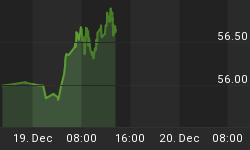
Richard Wyckoff used this tool for over 20 years, of course as readtheticker.com is a fan website of Richard Wyckoff here is our reproduction of his work.
More from RTTT
Notes from the tool guide:
2) PnF Wave Swing Scanner is useful for the Richard Wyckoff Position Sheet analysis.
3) Please review the Swing pop out chart Daily PnF chart to review 3,2,1s. The data in the PnF Wave scanner is based on this PnF chart.
4) PnF numbers are: 3 is AveBarChg x2, under 20 days, 2 is AveBarChg x1.5, under 20 days, 1 is AveBarChg x1.5, over 20 days.
5) AveBarChg: Is the average change in price by percentage of each PnF bar or wave for all bars on the chart (see note 3 above).
6) Blue us positive, red is negative change. The 3s are fast moving periods and can be climatic, 1s are slower.
7) PnF Last is the last bar that occured. When PnF Last and PnF Sum are shaded this means the last 21 bars are all blue or red, no conflict.
8) PnF Sum is the summation of the last 21 bars as shown by the PnF Wave History (see note 3 above).
9) PnF Wave History shows the last 21 PnF bars or waves (see note 3 above). Horizontal study works, vertical does not as time is not in sync.
10) Step Btw 20 shows the percentage of number of closes within the RTT Steps Band (29,0.1,32,4) over 20 days.
11) Step Btw 130 shows the percentage of number of closes within the RTT Steps Band (29,0.1,32,4) over 130 days.
12) Step Btw 200 shows the percentage of number of closes within the RTT Steps Band (29,0.1,32,4) over 200 days.
13) Step Btw 300 shows the percentage of number of closes within the RTT Steps Band (29,0.1,32,4) over 300 days.
NOTE: readtheticker.com does allow users to load objects and text on charts, however some annotations are by a free third party image tool named Paint.net
Investing Quote...
"Every movement in the market is the result of a natural law and of a Cause which exists long before the Effect takes place and can be determined years in advance. The future is but a repetition of the past, as the Bible plainly states." ~ William D Gann
"The key to making money in stocks is not to get scared out of them." ~ Peter Lynch















